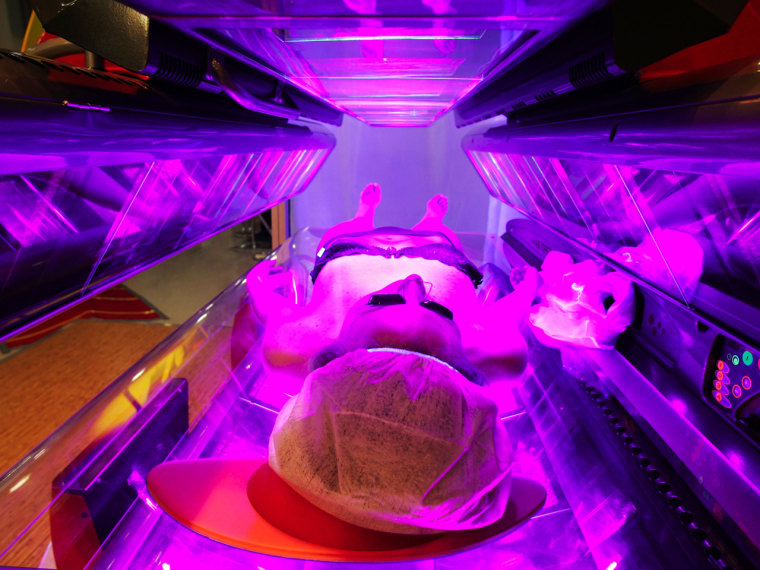More than a quarter of white high school girls and close to a quarter of young adults use tanning salons – even though there’s no good reason to use one and they raise the rates of skin cancer and wrinkles, federal health experts reported on Monday.
And more than 15 percent of these young women are using tanning salons 10 times or more a year, despite strong advice against doing so, the Centers for Disease Control and Prevention says.
While some states are considering legislation to limit the availability of tanning salons, the better long-term solution would be to change a culture that worships tanned skin, instead valuing a range of skin tones, the CDC says.
“We need to encourage young women to embrace their natural, untanned skin colors,” says Gery Guy of the CDC’s division of cancer control, who led the research.
Guy’s team looked at surveys of high school students and young adults from 2010 and 2011, which cover tens of thousands of people interviewed in depth.
“Among non-Hispanic white female high school students, 29.3 percent engaged in indoor tanning and 16.7 percent engaged in frequent indoor tanning during the previous 12 months,” they wrote. “Among non-Hispanic white women aged 18-34 years, 24.9 percent engaged in indoor tanning and 15.1 percent engaged in frequent indoor tanning during the previous 12 months.”
That’s even though people who use indoor tanning treatments raise their risk of melanoma – the deadliest form of skin cancer – by 59 to 75 percent. People who use tanning booths or lights before they are 25 raise the risk by as much as 100 percent.
“This widespread use is of great concern given the elevated risk of skin cancer among younger users and frequent users,” Guy’s team wrote in the Journal of the American Medical Association's journal JAMA Internal Medicine. Melanoma kills more than 9,000 Americans a year.
“This is the first study where we actually pinpointed this population to get a better understanding,” Guy said in a telephone interview.
Young women and girls still believe, wrongly, that they can get a “base” tan to protect themselves from burning, Guy says. “It provides very little, if any, protection,” he said. But usually they are simply trying to look better.
“People indoor tan, I think, for cosmetic reasons, whether it’s for special events like the prom or homecoming,or before they go on vacation,” Guy said.
“I think behaviors are driven in part by social norms that put value on physical appearance,” he added. And there’s no immediate bad effect, so tanners can fool themselves into thinking it’s harmless. “The more harmful effects of indoor tanning – wrinkles, spots and even skin cancer -- don’t even come onto effect for years,” Guy said.
The 2010 health reform law tries to discourage tanning with a 10 percent excise tax on salons. According to the National Conference of State Legislatures, 33 states regulate the use of tanning facilities by minors. California and Vermont ban their use by anyone under 18.
